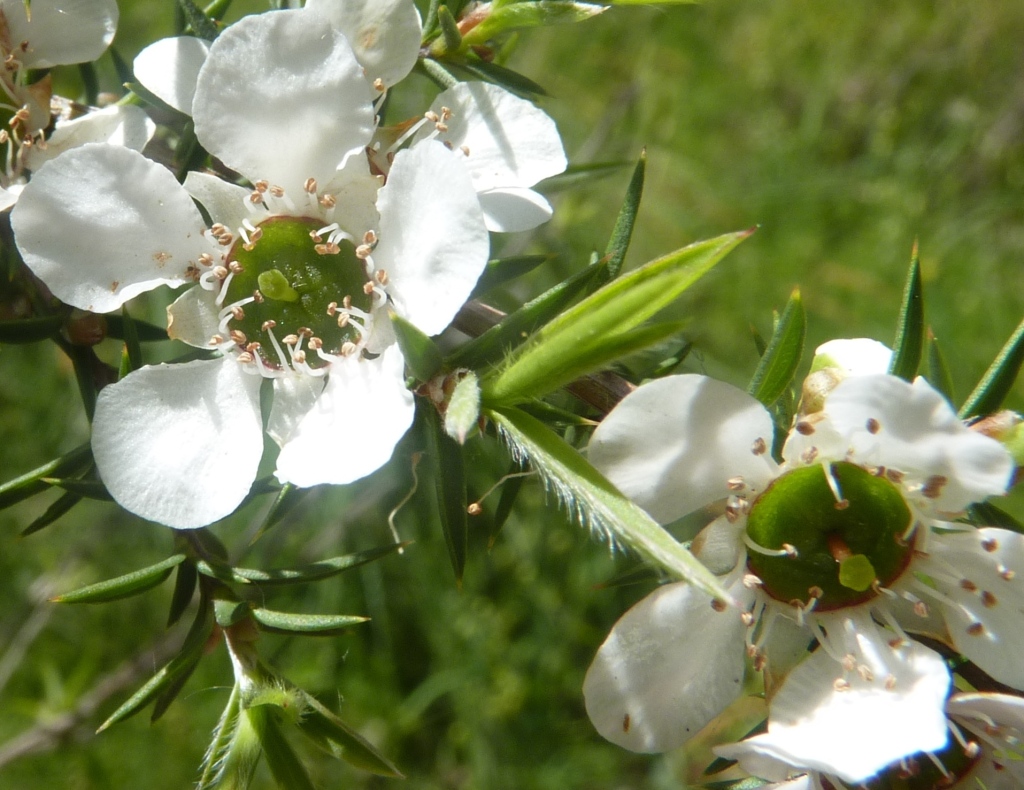Leptospermum continentale
Joy Thomps. Prickly TeatreeShrub to 2 m high; bark on smaller stems smooth, shedding in stringy strips. Young stems with a broad flange near base of petiole. Leaves narrowly ovate, 5–13 mm long, 1–3.5 mm wide, broadest near the base, glabrous (hairy when young); apex subulate, incurved, pungent; margins incurved (rarely flat), minutely denticulate. Flowers 8–12 mm diam.; hypanthium c. 2–2.5 mm long, glabrous; pedicel to 1 mm long; sepals narrowly triangular to triangular, c. 1.5 mm long, glabrous on outer surface, deciduous; petals 3–5 mm long, usually white; ovary 5-locular, apex glabrous. Fruit persistent, broadly hemispherical, 5–8 mm diam., surface ultimately shedding in papery flakes and becoming rough, valves woody; seeds 2–3 mm long, with a linear-striate surface pattern. Flowers Sep.–Feb.
LoM, Wim, GleP, Brid, VVP, VRiv, MuF, GipP, OtP, WaP, Gold, CVU, GGr, DunT, NIS, EGL, EGU, WPro, HSF, HNF, OtR, Strz, MonT, VAlp. Also SA, NSW, ACT. Apart from the mallee and alps, widespread in heath-lands and woodlands, usually on well-drained sandy soils, but also on swamp and stream margins.
Leptospermum continentale has been confused previously with L. juniperinum, a species confined to coastal regions northwards from Ulladulla, New South Wales, to Fraser Is., Queensland. Leptospermum continentale can approach L. scoparium in appearance, leading to difficulties with identification. Hybrids with L. myrtifolium have been recorded. Pink-flowered forms of L. continentale have been observed at Lavers Hill, in the Otway Ranges.
Lyne, A. (1996). Leptospermum. In: Walsh, N.G.; Entwisle, T.J., Flora of Victoria Vol. 3, Dicotyledons Winteraceae to Myrtaceae, pp. 1009–1019. Inkata Press, Melbourne.
 Spinning
Spinning

